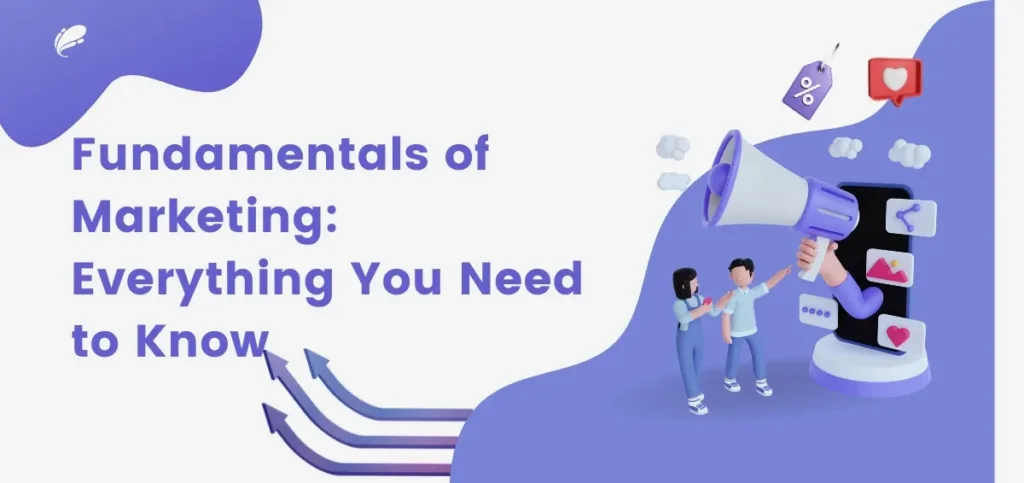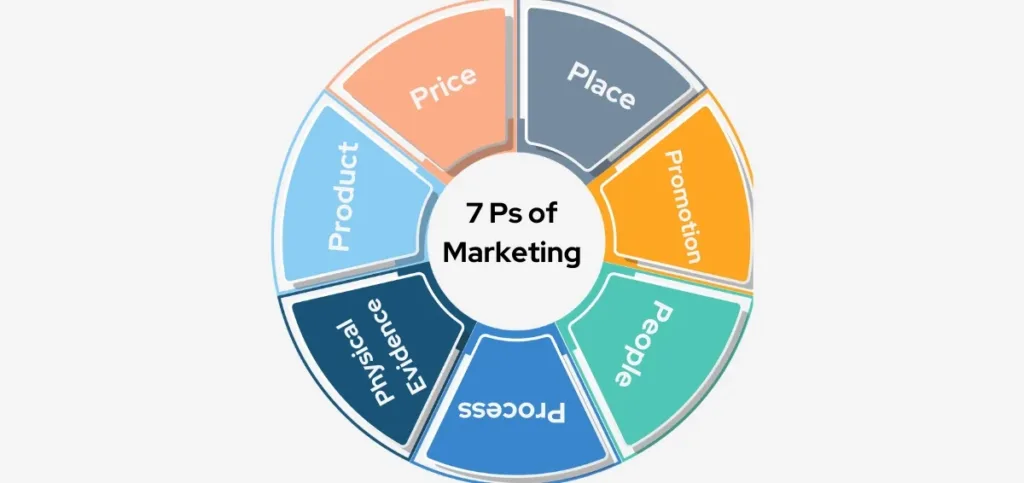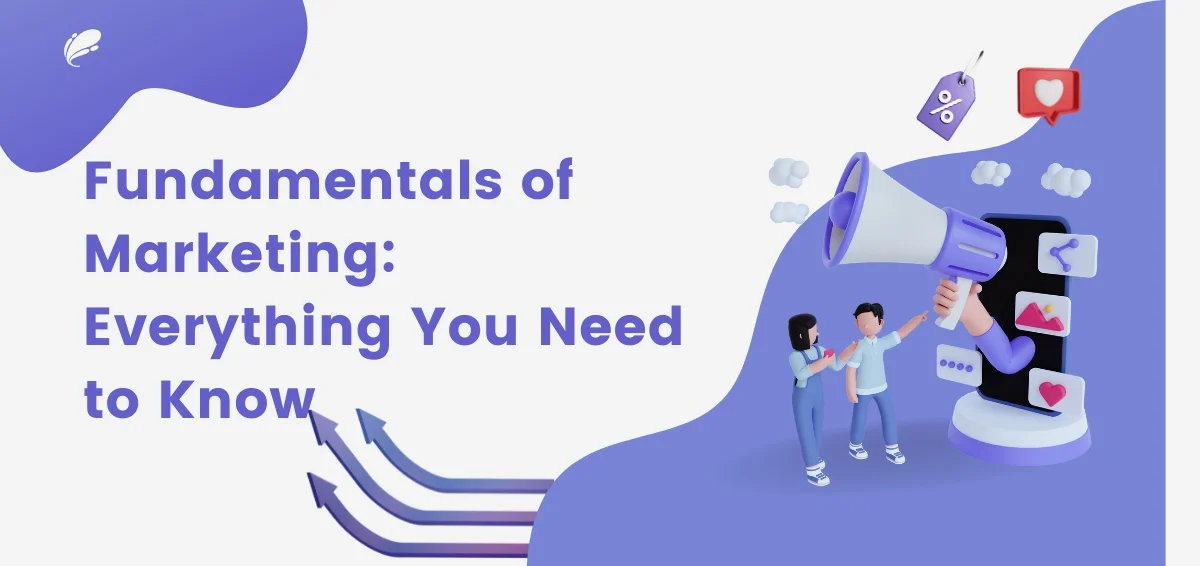
Developing a good product/service is not easy. However, something that contributes equally to the success of the item once it’s made is marketing. After all, if no one is there to leverage the product’s benefits, what use is creating it in the first place? However, marketing goes far beyond simply raising awareness of your product. It is a long process that involves, among other things, learning about your audience, understanding the value of your offering, and creating a message that resonates with the intended customers. You must be aware of marketing’s core concepts to gain a deeper understanding. In this post, we’ll explain the fundamentals of marketing so that you can make more informed decisions about developing a marketing strategy.
Read Also: Lean vs Six Sigma
What Is Marketing and Why Is It Done?
According to the American Marketing Association (AMA), marketing is an activity, set of institutions, and procedures for communicating, delivering, and exchanging products/services that benefit society at large. Marketing encompasses everything done to get people more aware of and interested in your offering. This process covers researching and analyzing the target market and understanding what truly interests your audience. Marketing occurs in every phase of a product’s selling journey. Advertising, which is often used interchangeably with marketing, is a part of marketing but only encompasses spreading awareness of a product/service.
7 Ps of Marketing, aka the Marketing Fundamentals

The 7 Ps of marketing cover all the marketing fundamentals. Let’s go over them in more detail.
1. Product
Product is the foundation upon which your marketing strategy rests. It is what you are offering to your audience. So, it is critical to ensure that it fully fits your intended customers’ needs, wants, and preferences. The product does not only mean the actual item. It encompasses everything from the design to packaging, features, and more. Developing a good product results from being intimately aware of what your customers want. Such a product offers value to your buyers, which makes more of them purchase it.
2. Price
Price is the component that generates revenue for your business. You should aim to establish competitive prices for your offerings. This is done after researching the prices offered by your competitors in the industry. The price shouldn’t be too low as such a price is often equated with a lower-quality product. On the other hand, it shouldn’t be too high as that will only lead your customers to choose your competitors over you. Here are some key things to know to establish the ideal price for your product/service.
- The demand for your offering.
- The amount of money that your target customers can pay.
- Your expenditure.
- The profit margin you need.
3. Place
Place is another significant element of marketing. It is where your customers find your product. Depending on the nature of your product, the place can be offline or online. Place is not only where your product is found. It is also how you exhibit your product to your customers, such as in a shop window or on a website. For businesses that sell their products online, it is critical to ensure proactive delivery. They have fewer points of interaction with customers, and speedy and timely delivery ensures repeat purchases from your customers. Whether the place is online or offline, it should have a design that perfectly reflects your brand and is based on customer needs. Finally, it should also provide convenient access to your offerings.
4. Promotion

Promotion refers to all how you communicate about your product/service to your audience. There are different to tell your customers about your product, its features, and its benefits. Here are some of the major ways in which promotion for a product can be carried out.
Sales promotion
Sales promotion refers to offering coupon codes, discounts, and special deals when purchasing your product.
Advertising
Advertising can take many forms. Some common ways of advertising are publishing ads in newspapers, magazines, radio, and television, physically through billboards, directories, and online ads.
Online Marketing
Online marketing is done through a digital marketing strategy. It involves discovering your target audience and attracting them by publishing relevant content on the online channels they actively use.
5. People
People include all those involved in making your product and who also come into direct or indirect contact with your customer. Often, people include your employees or workforce. You, as the business owner, also fall into this category. This is the human side of your brand. It is critical to ensure that every interaction of your or your employees with your customers is positive. Interactions can be face-to-face, through a dedicated contact center, via online chats, or on social media.
Recruiting talented people will positively influence sales of your product. This is because the right people know how to communicate your brand message to your audience on different channels and in person. At the same time, it’s also important to improve your staff’s communication skills to enable them to interact effectively. Finally, maintaining a positive and supportive work environment will stimulate your employees to put their best foot forward while communicating the value of your product to your customers.
6. Process
Process refers to every single activity involved in delivering your final product to your customer. It’s never about simply buying the product. Customer experience with your product or service begins when they discover your business. It lasts through the final purchase and even beyond it. Strive to become someone with whom it’s ‘easy to do business.’ Effective process helps you gain a loyal base of repeat and consistent customers.
7. Physical Evidence
Physical evidence is tangible proof of your product’s credibility. It includes business branding and covers both physical and digital environments. Some examples of physical evidence include retail stores, interior design, business websites, and online ratings and reviews. Your product’s physical environment helps reduce uncertainty among potential customers by helping them learn more about it. The product credibility established by the physical evidence makes customers more confident about buying it.
Read Also: Sales Closing Techniques And Strategies
Summing Up
All the seven fundamentals of marketing have their unique place. You cannot consider them in isolation. It is important to fully understand these concepts before launching campaign tactics. Ultimately, all these four marketing concepts help you create a successful marketing strategy wherein you develop customer loyalty and keep them coming back to you for years ahead.










